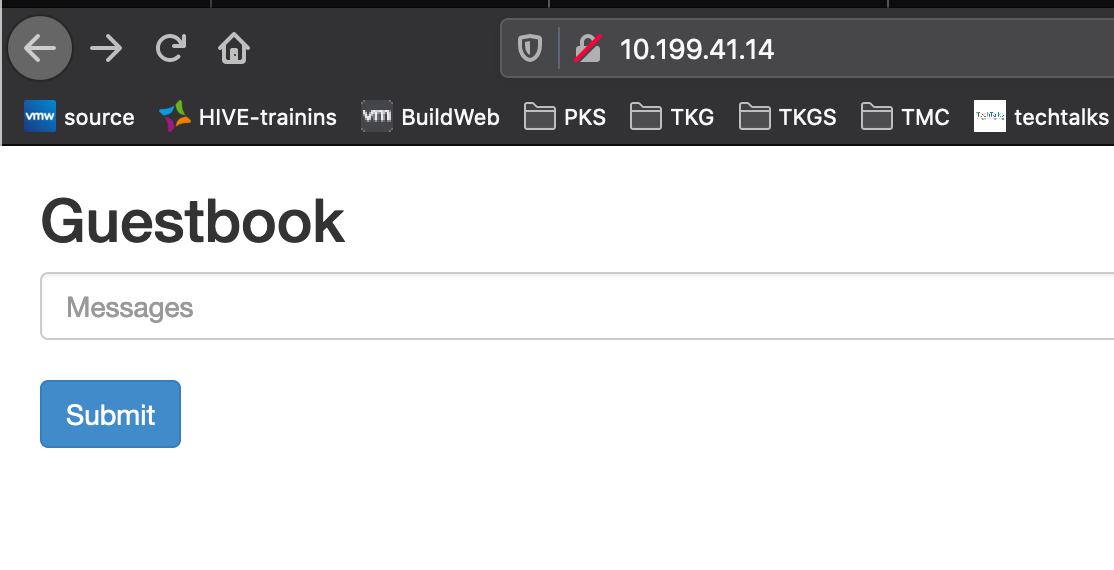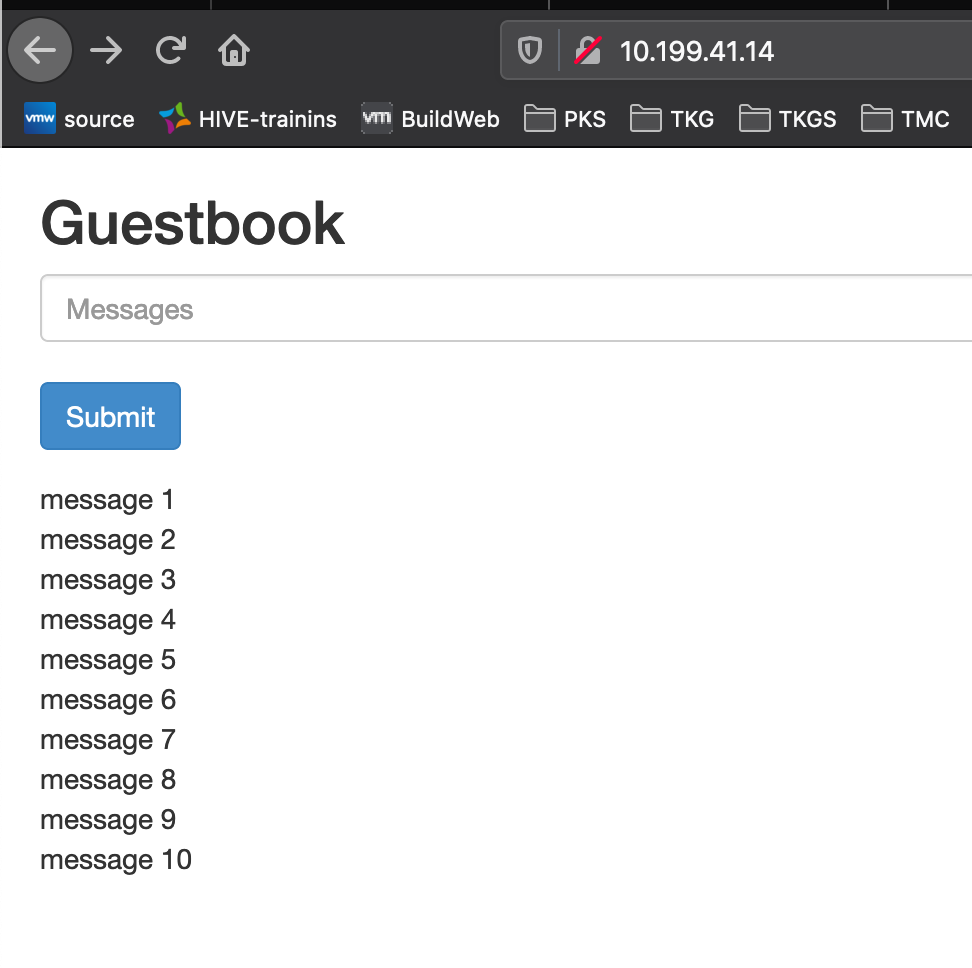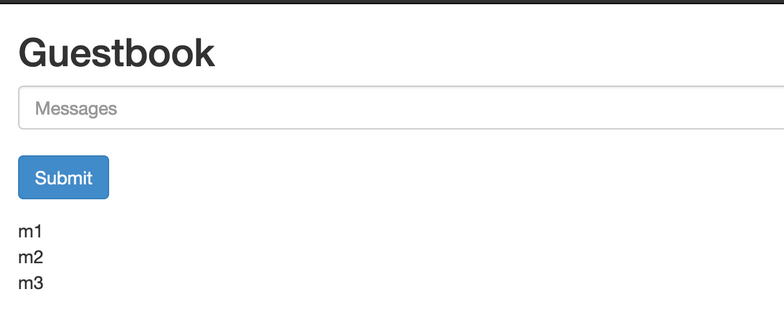This topic describes how to use Velero to back up and restore a stateful application with namespace using the Container Storage Interface (CSI).
Overview
This topic describes how to use Velero to back up and restore a stateful application with namespace using the Container Storage Interface (CSI) instead of the proprietary VMware Cloud Provider (vCP).
To test Velero back up and restore for stateful applications, use the Guestbook application with a persistent volume.
When restoring the stateful application using Velero, the Storage Class that was used by the PVC in the application must be present on the Kubernetes cluster. If the PVC is using the default storage class, then the default storage class must also be present prior to initiating the restore operation with Velero.
Prerequisites
Install and configure Minio and Velero.
Download the Guestbook app YAML files to a local known directory:
- redis-leader-deployment.yaml
- redis-leader-service.yaml
- redis-follower-deployment.yaml
- redis-follower-service.yaml
- frontend-deployment.yaml
- frontend-service.yaml
Create CSI Storage Class
Create the following storage class named guestbook-storageclass.yaml. Note that the generic CSI provisioner is used (csi.vsphere.vmware.com), as opposed to the proprietary vCP provisioner (kubernetes.io/vsphere-volume).
kind: StorageClass
apiVersion: storage.k8s.io/v1
metadata:
name: guestbook-sc-csi
annotations:
storageclass.kubernetes.io/is-default-class: "true"
provisioner: csi.vsphere.vmware.com
parameters:
datastoreurl: "ds:///vmfs/volumes/vsan:52d8eb4842dbf493-41523be9cd4ff7b7/"
Apply the YAML file:
kubectl apply -f 0-guestbook-storageclass.yaml
storageclass.storage.k8s.io/guestbook-sc-csi created
Verify:
kubectl get sc
NAME PROVISIONER RECLAIMPOLICY VOLUMEBINDINGMODE ALLOWVOLUMEEXPANSION AGE
guestbook-sc-csi (default) csi.vsphere.vmware.com Delete Immediate false 4s
Deploy Guestbook App
Create Guestbook namespace:
kubectl create ns guestbook-csi
namespace/guestbook-csi created
Deploy the Guestbook app:
kubectl apply -f . -n guestbook-csi
storageclass.storage.k8s.io/guestbook-sc-csi unchanged
persistentvolumeclaim/redis-leader-claim created
persistentvolumeclaim/redis-follower-claim created
service/redis-leader created
deployment.apps/redis-leader created
service/redis-follower created
deployment.apps/redis-follower created
service/frontend created
deployment.apps/frontend created
Verify:
kubectl get all -n guestbook-csi
kubectl get pvc,pv -n guestbook-csi
Access the Guestbook app at http://10.199.41.14/.

Add many messages so they can be stored in the PV.

Back Up the Guestbook App Using Namespace
Because this app is stateful, you need to add annotations for the stateful pods with the volume name.
Get the volume names:
kubectl get pod -n guestbook-csi
The volume name is redis-leader-data for pod redis-leader-64fb8775bf-wg5tk.
The volume name is redis-follower-data for pod redis-follower-779b6d8f79-mqcrx.
Annotate the pods:
kubectl -n guestbook-csi annotate pod redis-leader-64fb8775bf-wg5tk backup.velero.io/backup-volumes=redis-leader-data
pod/redis-leader-64fb8775bf-wg5tk annotated
kubectl -n guestbook-csi annotate pod redis-follower-779b6d8f79-mqcrx backup.velero.io/backup-volumes=redis-follower-data
pod/redis-follower-779b6d8f79-mqcrx annotated
Verify:
kubectl -n guestbook-csi describe pod redis-leader-64fb8775bf-wg5tk | grep Annotations
Annotations: backup.velero.io/backup-volumes: redis-leader-data
kubectl -n guestbook-csi describe pod redis-follower-779b6d8f79-mqcrx | grep Annotations
Annotations: backup.velero.io/backup-volumes: redis-follower-data
Perform the Velero back up:
velero backup create guestbook-csi-backup --include-namespaces guestbook-csi
Backup request "guestbook-csi-backup" submitted successfully.
Run `velero backup describe guestbook-csi-backup` or `velero backup logs guestbook-csi-backup` for more details.
Verify the backup that was created.
velero backup get
NAME STATUS ERRORS WARNINGS CREATED EXPIRES STORAGE LOCATION SELECTOR
guestbook-csi-backup Completed 0 0 2020-07-30 13:36:13 -0700 PDT 29d default <none>
Verify backup details:
velero backup describe guestbook-csi-backup --details
Use Velero Kubernetes CustomResourceDefinition (CRD) commands to further verify:
kubectl get backups.velero.io -n velero
NAME AGE
guestbook-csi-backup 4m58s
kubectl describe backups.velero.io guestbook-csi-backup -n velero
Restore the Guestbook App
To test the restoration of the Guestbook app, delete it.
Delete the namespace:
kubectl delete ns guestbook-csi
namespace "guestbook-csi" deleted
Verify namespace deletion:
kubectl get ns
kubectl get pvc,pv --all-namespaces
Make sure the storage class used by the application is still present:
kubectl get sc
NAME PROVISIONER RECLAIMPOLICY VOLUMEBINDINGMODE ALLOWVOLUMEEXPANSION AGE
guestbook-sc-csi (default) csi.vsphere.vmware.com Delete Immediate false 11m
Restore the app:
velero restore create --from-backup guestbook-csi-backup
Restore request "guestbook-csi-backup-20200730134254" submitted successfully.
Run `velero restore describe guestbook-csi-backup-20200730134254` or `velero restore logs guestbook-csi-backup-20200730134254` for more details.
Verify that the app is restored:
velero restore describe guestbook-csi-backup-20200730134254
Run the following commands to verify:
velero restore get
NAME BACKUP STATUS ERRORS WARNINGS CREATED SELECTOR
guestbook-csi-backup-20200730134254 guestbook-csi-backup Completed 0 0 2020-07-30 13:42:54 -0700 PDT <none>
kubectl get ns
NAME STATUS AGE
default Active 22d
guestbook-csi Active 71s
kube-node-lease Active 22d
kube-public Active 22d
kube-system Active 22d
pks-system Active 22d
velero Active 8d
kubectl get all -n guestbook-csi
kubectl get pvc,pv -n guestbook-csi
Access the Guestbook app at http://10.199.41.10/.

Conclusions
The Velero restore might not show the saved messages. This is not a Velero issue. The Guestbook app is using some kind of RAM cache for the messages so if those messages are not flushed into disk, the data is not available in the PV.
Key takeaways from the restore operation for this scenario:
- Pod annotation is still required for Velero to back up a PV.
- The namespace
guestbook-csiwas automatically re-created. - The Kubernetes service LB IP has changed, from
10.199.41.14to.16.